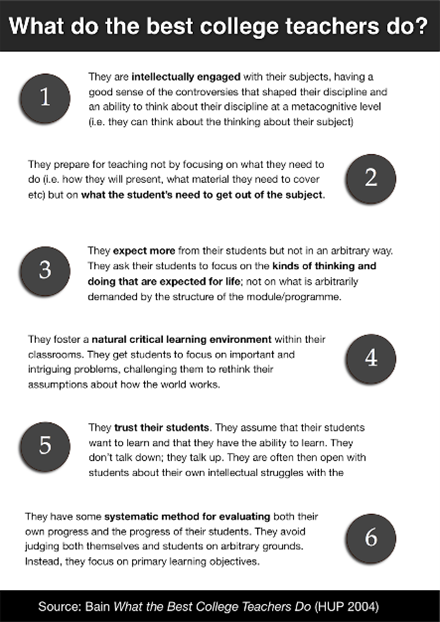Online Course
Nurs 791 - INSTRUCTIONAL STRATEGIES AND ASSESSMENT
Module 1: The Teaching Process
Defining Teaching
How learners learn was the focus of NURS 787 Theoretical Foundations of Teaching and Learning in Nursing and Health Professions (pre-requisite/co-requisite course). In NURS 787 the content was about the learner, their developmental level and learning style. Theories of learning, including their purpose and use, were examined. The purpose of a needs assessment was also examined and finding needs was explored. Then the focus was on establishing learning goals, objectives, and content.
Here in NURS 791 the focus is on teaching and the instructional and evaluation strategies teachers can use in their teaching. Click here to view an outline of the content in both courses. The work done on goals, objectives, and content in NURS787 will help frame our work here in NURS791.
Learners can learn without teachers and teachers can teach without students learning, but successful learning can be enhanced by the teacher and the way they teach. Ideally, the teacher identifies the learners’ needs and learning styles and formulates learning goals and objectives. The teacher chooses strategies that are based on the learners’ learning style and organizes the learning environment.
Let's see how teaching is defined.
One definition of teaching is to provide the learner with the training, knowledge and skills that are required by a student to practice their profession. Teaching is also the act, practice or profession of a teacher (Merriam-Webster, 2023), and thus requires one to “teach”. As you look at what it means to teach, also consider what this means withing nursing and other health professions. Are some parts of the definition of “teach” more pertinent to nursing education than others?
 Teaching, education, and training are often used synonymously when they actually have different meanings. Teaching is the imparting of information so the learner acquires new knowledge and skills. Education can be defined as the activities of teaching; activities that impart knowledge or skill. Training can be defined as instruction that emphasizes job-specific, traditionally skills-based instruction. Again, consider how these terms are used within nursing education.
Teaching, education, and training are often used synonymously when they actually have different meanings. Teaching is the imparting of information so the learner acquires new knowledge and skills. Education can be defined as the activities of teaching; activities that impart knowledge or skill. Training can be defined as instruction that emphasizes job-specific, traditionally skills-based instruction. Again, consider how these terms are used within nursing education.
Principles of Good Teaching
According to Chickering and Gamson (1987), there are seven principles of good teaching that can be summarized as follows:
- Encourage contact between students and faculty
- Develop reciprocity and cooperation among students
- Encourage active learning
- Give prompt feedback
- Emphasize time on task
- Communicate high expectations
- Respect diverse talents and ways of learning
These principles can be explored in more detail here. Although the work of Chickering and Gamson (1987) is more than 30 years old, their principles are still used today – as they are easily adaptable to changes in technology and students.
In 2004, Ken Bain published What the Best College Teachers Do, based on 100 college professors he interviewed across a variety of disciplines and institutions. So “What do the best college teachers do?” His answer to this question takes on 6 themes as presented here:

After exploring these principles and themes of “good teaching”, reflect on your own strengths. What principles are easy for you to embrace? Which ones do you think are challenging?